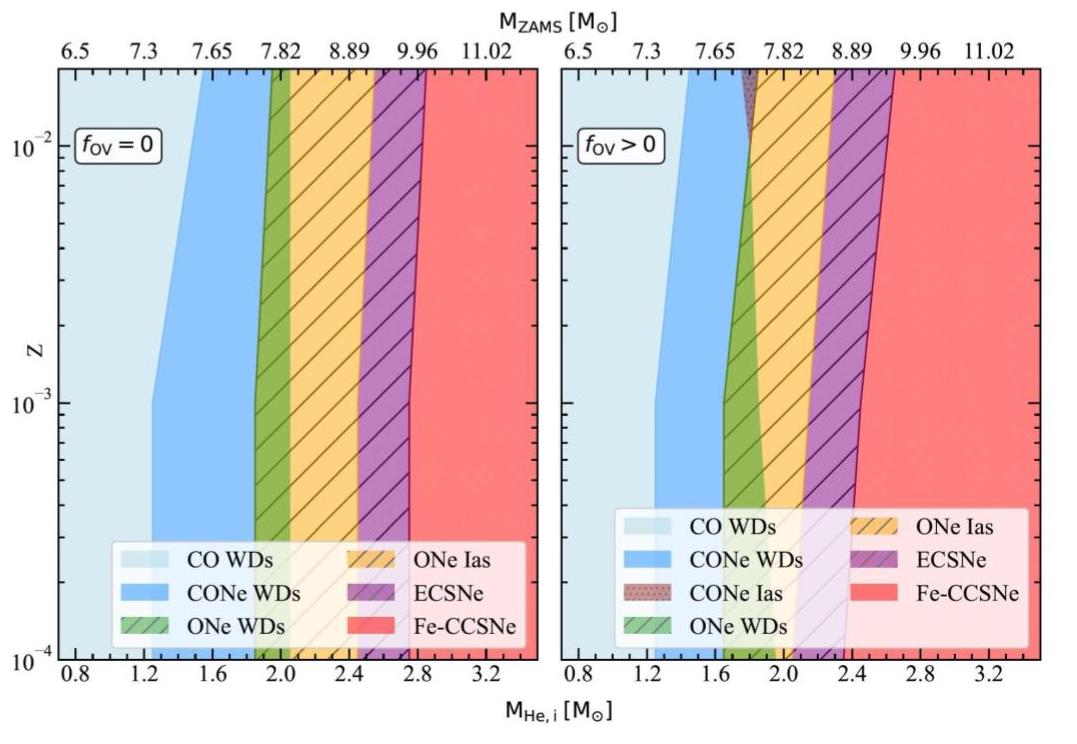It is known that low-mass stars end their lives as white dwarfs, while high-mass stars become neutron stars or black holes. But what bridges the divide?
The evolution of so-called “intermediate-mass” stars – with masses between 8 and 12 solar masses – is extremely complex and puzzling. As they approach their final evolutionary stages, such stars develop dense oxygen-neon (ONe) cores and emit most of their radiation in neutrinos. At the same time, their outer layers expand and evaporate via powerful stellar winds owing to weak surface gravity.

Once their degenerate cores reach a critical density, atomic nuclei begin to absorb the surrounding electrons reducing the pressure that stabilises the star against gravity. At the same time, this exothermic process releases nuclear energy that can trigger a so-called “thermonuclear” explosion.
It is the competition between the loss of pressure due to electron captures, and the release of thermonuclear energy, that determines the final outcome: if electrons are absorbed fast enough, the core collapses in what is known as an “electron-capture supernova”, and a low-mass neutron star is formed. If energy release prevails then the star can be partly, or even completely, destroyed in a thermonuclear explosion.
In a recent study, Savvas Chanlaridis, a PhD candidate at the Department of Physics and the Institute of Astrophysics - FORTH, and his supervisor Dr. John Antoniadis suggested a new mechanism for “Type-Ia” thermonuclear supernovae (SNe-Ia). They have found that when intermediate-mass stars lose their hydrogen envelopes, for example due to interactions with a binary companion, their evolution accelerates significantly. As a result, a thermonuclear explosion is triggered when the stellar core is still not dense enough to allow for electron captures.
The result is a hydrogen- and helium-free thermonuclear explosion that destroys the entire star making these systems atypical progenitor candidates of SNe-Ia. This novel explosion channel, which the research group members call (C)ONe SNe-Ia, is a benchmark that may help explain some peculiar “Type-Ia” supernovae discovered in numerous recent photometric surveys. Additionally, these results carry broader implications for the formation of neutron stars in binary systems affecting the observed pulsar populations.
Articles:
- “Type Ia supernovae from non-accreting progenitors”, J. Antoniadis, S. Chanlaridis, G. Gräfener, and N. Langer, 2020, A&A, 635, 72A
- “Thermonuclear and electron-capture supernovae from stripped-envelope stars”, S. Chanlaridis, J. Antoniadis et al., 2022, A&A, 668, 106C

